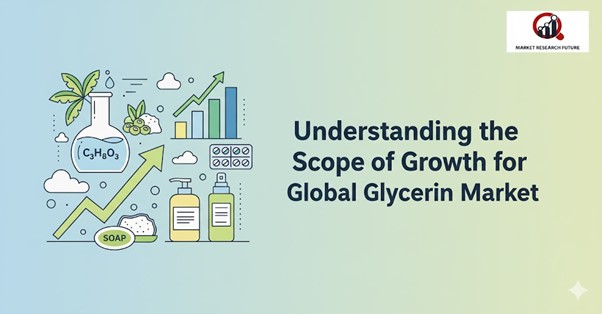The Expansion of the Pharmaceutical Sector: A Boon for the Glycerin Market
Applications in Personal Care Products to Drive the Demand for Glycerin

The global glycerin market is expected to grow from USD 2.05 billion in 2024 to USD 3.49 billion by 2032. This advancement is subject to a moderate CAGR of 6.87% through the forecast period.
Glycerin is one of the most versatile chemicals in existence, with a combination of several unique chemical and physical properties. Another interesting factor about glycerin refers to its compatibility with other chemicals.
In addition, it also offers the flexibility that can be suitable for different industrial applications. The versatility of the applications of glycerin is also responsible for increasing the demand for refined glycerin across different industries, such as global chemicals manufacturing, food production, and personal and home care.
Chemical Composition of Glycerin
Glycerin is basically a simple poly compound with a combination of sugar and alcohol. The chemical formula of glycerin, C3H8O3, is strikingly similar to the structure of isopropyl alcohol.
The physical appearance of glycerin is colorless, and it is non-toxic in nature. Glycerin has a sweet taste due to its sugar content. From a chemical perspective, glycerin is a trihydric alcohol known for its solubility and hygroscopic properties.
Production of Glycerin
The production of glycerin is spread throughout the world, with notable manufacturing hubs concentrated in the United States, Europe, South America, and Southeast Asia. The most important thing to note about the production of glycerin is that it is a byproduct of other manufacturing processes.
Basically, you can infer that glycerin cannot be produced intentionally and relies on two primary manufacturing compounds for its production. Here are the two primary manufacturing processes focused on producing glycerin as a byproduct:-
- Chemical manufacturing processes using base oils such as coconut oil, palm oil, or palm kernel oil for producing fatty alcohols and fatty acids.
- Bio-diesel production processes using these base oils, alongside other oils, such as olive, soy, and rapeseed, for producing methyl esters, which are blended into diesel for creating bio-diesel products.
Biodiesel is the biggest industrial source for producing glycerin, with a contribution of over 60% to the global glycerin supply. Factors such as higher biodiesel mandates in Europe and the tax credit for blenders in the US have substantiated their position among the top biodiesel producers in the world.
Europe is presently the largest biodiesel producer and accounts for almost 50% of the world’s biodiesel production, along with the US.
Applications of Glycerin
Applications of glycerin are also one of the foremost factors that present opportunities for the future growth of the glycerin industry. Glycerin finds applications across various industries, such as cosmetics, automotive, medical, and the food industry.
- The humectants and emollient properties of glycerin make it suitable for cosmetic products, especially in moisturizers.
- Glycerin finds applications in the food industry, primarily as a preserving agent, sweetener, and emulsifier.
- Glycerin finds applications in the medical sector for making medicines palatable and also finds users in IV fluids.
- Glycerin is used in the automotive industry as a permanent anti-freeze used in radiator cooling systems and is also found in protective coatings.
Therefore, the glycerin market has many opportunities for expanding its growth by capitalizing on various favorable market factors. With many other potential uses of glycerin, it is inevitable to explore business opportunities with it.
Regional Analysis
The ongoing research and development support in Europe offers better support to the chemical industry, allowing researchers to innovate new materials. Manufacturing of glycerin has been simplified, owing to such efforts, driving the market in the region.
The growing food industry in North America creates new prospects for glycerin. Leading players in the industry are expanding in the region, helping the market explore niche markets in different end-user segments.

Leave a Comment